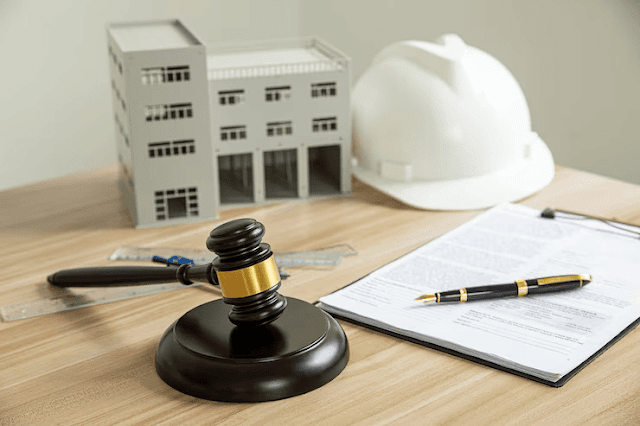A Contractor’s Guide to Working with a Construction Defect Attorney in California
In California’s highly competitive construction industry, contractors face constant pressure to deliver projects that meet both client expectations and strict building codes. Even with meticulous planning and execution, disputes can arise when an alleged defect is discovered—sometimes years after completion. That’s where a construction defect attorney becomes an essential ally. Whether you’re dealing with a minor workmanship claim or a large-scale structural issue, knowing how to work effectively with legal counsel can save your business from costly litigation, reputational damage, and prolonged project delays.
This guide is designed specifically for RA contractors and other general contractors in California. It covers what construction defect claims involve, when to hire an attorney, how to prepare your case, and how to maintain a productive attorney–client relationship that protects your interests.
Understanding Construction Defect Claims in California
A construction defect is any flaw in design, workmanship, or materials that results in a failure to meet applicable standards, building codes, or contract specifications. Common examples include:
- Structural defects – Issues with foundations, framing, or load-bearing walls.
- Water intrusion – Roof leaks, window failures, or inadequate waterproofing.
- Mechanical system failures – Problems with plumbing, HVAC, or electrical installations.
- Finishing and aesthetic issues – Uneven surfaces, poor paint quality, or misaligned fixtures.
California law treats construction defects seriously, partly because they can affect property value, safety, and habitability. Claims can be brought under breach of contract, negligence, breach of warranty, or strict liability theories.
When Contractors Should Seek Legal Representation
Many contractors hope to resolve defect claims directly with clients or through insurance. However, certain situations call for immediate involvement of a construction defect attorney:
- High-value claims – If the alleged defect could cost thousands or millions to repair, you need legal protection from day one.
- Multiple parties involved – Complex cases often include developers, architects, subcontractors, and suppliers, all pointing fingers.
- Insurance disputes – If your insurer delays or denies coverage, an attorney can help enforce your policy rights.
- Threat of litigation – When a formal complaint or Notice of Claim under California’s Right to Repair Act (SB 800) is served, professional legal guidance becomes urgent.
- Preservation of evidence – Attorneys can ensure documentation, inspections, and communications are handled correctly to protect your case.
The Role of a Construction Defect Attorney
An experienced attorney doesn’t just defend you in court—they act as a strategic partner who understands both construction practices and California’s legal framework. They typically:
- Review contracts and warranties to determine your obligations and defenses.
- Coordinate expert inspections to assess whether a defect truly exists and its cause.
- Negotiate with claimants to reach fair settlements before litigation escalates.
- Manage discovery and trial preparation if the case proceeds to court.
- Advise on risk management to prevent future claims.
By involving your attorney early, you give them the opportunity to build a stronger defense while options for resolution remain flexible.
Preparing to Work with Your Attorney
Your ability to provide timely, organized information can significantly impact your case’s outcome. Before meeting with your attorney, gather:
- Project documentation – Contracts, change orders, blueprints, inspection reports, and specifications.
- Communication records – Emails, text messages, meeting notes, and letters between you, the client, and subcontractors.
- Photos and videos – Visual evidence taken during and after construction, including any repairs.
- Insurance policies – Certificates, coverage details, and claim correspondence.
- Witness information – Contact details of workers, subcontractors, or supervisors who can testify about the project.
The more complete your file, the faster your attorney can evaluate your legal position.
Navigating California’s Right to Repair Act (SB 800)
California’s SB 800 law requires certain steps before a homeowner can file a construction defect lawsuit. The process generally includes:
- Notice of Claim – The homeowner must send a written notice detailing the alleged defects.
- Inspection period – Contractors have the right to inspect the property and verify the claim.
- Opportunity to repair – You may be given the chance to fix the defect before legal action begins.
- Documentation – All communications and repair efforts must be carefully recorded.
A knowledgeable attorney will guide you through this process, ensuring you meet deadlines and respond appropriately to avoid unnecessary escalation.
The Value of a Local Legal Partner
If your projects are concentrated in Southern California, working with a construction attorney in Orange County can offer strategic advantages. Local attorneys often have:
- Familiarity with regional building codes and inspection standards.
- Relationships with expert witnesses who are recognized by local courts.
- Insight into county-specific court procedures and settlement trends.
- Proximity for site inspections and in-person meetings that streamline the process.
Choosing a local attorney ensures your defense is grounded in both state law and the nuances of the area where you operate.
Maintaining a Strong Attorney–Client Relationship
Legal defense is most effective when there’s trust and clear communication between you and your attorney. Here’s how to keep the relationship productive:
- Be transparent – Hiding unfavorable facts will only harm your case.
- Respond promptly – Delayed responses can miss legal deadlines.
- Ask questions – Understanding your legal position helps you make informed decisions.
- Follow advice – Your attorney’s recommendations are based on experience and strategy.
- Stay involved – Attend meetings, participate in inspections, and review documents.
Risk Management to Reduce Future Claims
Even with strong legal support, prevention is better than litigation. RA contractors can reduce the likelihood of future defect claims by:
- Using clear, detailed contracts that define scope, materials, and timelines.
- Maintaining thorough project records for at least 10 years (the typical statute of repose for defects).
- Hiring qualified subcontractors with proven track records and proper licensing.
- Conducting quality control inspections at key stages of construction.
- Staying current with building codes and industry best practices.
Your construction defect attorney can also review your standard contracts and risk management procedures to identify areas for improvement.
What to Expect in a Construction Defect Case
While every case is unique, most construction defect disputes in California follow a similar path:
- Claim filed or notice served
- Inspection and investigation
- Repair negotiations or settlement talks
- Litigation filed if unresolved
- Discovery process – exchanging evidence, depositions, expert reports
- Pre-trial motions and potential mediation
- Trial or arbitration
Having a clear understanding of this process will help you remain prepared and proactive.
Final Thoughts
Construction defect claims are a reality of doing business in California’s building industry. For RA contractors, the difference between a manageable dispute and a financially devastating lawsuit often lies in having the right legal guidance. A skilled construction defect attorney can navigate complex laws, protect your rights, and work toward resolutions that preserve both your finances and your reputation.
By preparing documentation, understanding your obligations under SB 800, and fostering a transparent relationship with your attorney—especially one familiar with your local market, such as a construction attorney in Orange County—you put yourself in the strongest possible position to defend your work and your business.

.png)

Comments
Post a Comment